This article was co-authored by Chris M. Matsko, MD. Dr. Chris M. Matsko is a retired physician based in Pittsburgh, Pennsylvania. With over 25 years of medical research experience, Dr. Matsko was awarded the Pittsburgh Cornell University Leadership Award for Excellence. He holds a BS in Nutritional Science from Cornell University and an MD from the Temple University School of Medicine in 2007. Dr. Matsko earned a Research Writing Certification from the American Medical Writers Association (AMWA) in 2016 and a Medical Writing & Editing Certification from the University of Chicago in 2017.
There are 10 references cited in this article, which can be found at the bottom of the page.
This article has been viewed 66,476 times.
When using nasal spray, you need to ensure that you execute it correctly. Proper technique helps to make sure the medication gets far enough into your nostrils to be properly absorbed and to have its beneficial effects. With practice and with the right technique, you can easily learn how to effectively use a nasal spray.
Steps
Preparing to Use Your Nasal Spray
-
1Wash your hands.[1] Washing with warm water and soap should do the trick. Prior to using your nasal spray, it is important to have clean hands to minimize any risk of infection by getting germs into your nose or spraying them up alongside the medication.
-
2Clear your nose prior to using your nasal spray by blowing it. Remove as much mucus as possible. Do not blow too hard. For best and safest results, press down on one nostril with your finger as you blow the other, and then do the same to the other nostril.[2]Advertisement
-
3Check that you can inhale air through each nostril prior to using the nasal spray. After you have blown your nose or otherwise cleared your nasal passages, if you still cannot get air through then it is unlikely that the medication will be effective as it will not be able to travel far enough up the nasal passages.[3]
-
4Try home remedies to clear your nostrils prior to using the nasal spray. If you have blown your nose but still find that there is a lot of congestion, try these other home remedies to diminish the congestion in your nostrils. It is important for your nasal passages to be as clear as possible before using the medication. Some things to try include:[4]
- Taking a hot shower. Heat can help to clear out your nasal passages.
- Use a saline nasal spray.
- Using a humidifier. Contrary to popular belief, dry air actually worsens nasal congestion. Moist air, on the other hand, can help to clear out your nostrils.
- Drink plenty of water. Being well-hydrated can help to diminish congestion.
Using a Pressurized Canister Nasal Spray
-
1Press the canister into the holder. Make sure that it fits securely. Shake the canister a few times.[5] Check the directions to make sure that you are holding the canister correctly.
-
2Place the nozzle in the nostril receiving the spray. At the same time, press down on the other nostril with your finger. Close your mouth, and push the canister down just as you slowly breathe in through the one nostril receiving the medicine. Make sure that you take in the medicine. Do the same with the other nostril, making sure that you press down the nostril that just received the medicine. Do not take more than the specified amount of sprays.[6]
- Don't sniff or inhale too hard or the medicine may drip down the back of your throat. If this happens, try to spit it out.[7]
-
3Be careful not to blow your nose or sneeze directly after using the nasal spray.[8] Try to wait a few minutes to let the medication fully absorb first.
-
4Wash your hands again. After you have finished using your nasal spray, it is advisable to wash your hands again. Particularly if you are using a nasal spray temporarily to treat congestion from an illness, you will want to wash your hands to ensure that minimal germs are present on your hands. This helps to prevent others from catching your infection.
-
5Be patient. Many nasal sprays take consistent use before they become maximally effective. Wait at least 2 weeks (or whatever time-frame your doctor recommends, as it can vary depending on the type of medication) before evaluating the results of using the spray.[9]
- Do not take more than the recommended number of doses prescribed by your physician. Just like any other prescription medication, if you find that it is ineffective (or taking longer than you expected or hoped to work) that does not mean to double up on your dose. It could be dangerous to do so, so be sure to stick within the recommended limits of your doctor.
- The dosing of nasal sprays is variable and will depend upon what medication is contained within it.
Using a Bottle Pump Nasal Spray
-
1Clear your nose prior to using your nasal spray by blowing it. Remove as much mucus as possible. Do not blow too hard. For best and safest results, press down on one nostril with your finger as you blow the other, and then do the same to the other nostril.[10]
-
2Remove the lid and shake the medicine. Prime the pump spray before using it. You do this by squirting it into the air until it becomes a mist. It is important to "prime" it first with this type of nasal spray to ensure that the actual medication is what gets into your nostril and then absorbed.[11]
-
3Check the directions to make sure that you are holding the bottle correctly. You should grasp the bottle with your middle and index fingers on top and your thumb securing the bottle.
-
4Place the nozzle in the nostril receiving the spray and press down on the other nostril with your finger. Close your mouth, and squeeze the pump down just as you slowly breathe in through the one nostril receiving the medicine. Make sure that you take in the medicine. Do the same with the other nostril, making sure that you press down the nostril that just received the medicine. Do not take more than the specified amount of sprays.[12]
Expert Q&A
-
QuestionMy nasal spray is the Walgreens brand aloe nasal spray. How often should I use it?
 Chris M. Matsko, MDDr. Chris M. Matsko is a retired physician based in Pittsburgh, Pennsylvania. With over 25 years of medical research experience, Dr. Matsko was awarded the Pittsburgh Cornell University Leadership Award for Excellence. He holds a BS in Nutritional Science from Cornell University and an MD from the Temple University School of Medicine in 2007. Dr. Matsko earned a Research Writing Certification from the American Medical Writers Association (AMWA) in 2016 and a Medical Writing & Editing Certification from the University of Chicago in 2017.
Chris M. Matsko, MDDr. Chris M. Matsko is a retired physician based in Pittsburgh, Pennsylvania. With over 25 years of medical research experience, Dr. Matsko was awarded the Pittsburgh Cornell University Leadership Award for Excellence. He holds a BS in Nutritional Science from Cornell University and an MD from the Temple University School of Medicine in 2007. Dr. Matsko earned a Research Writing Certification from the American Medical Writers Association (AMWA) in 2016 and a Medical Writing & Editing Certification from the University of Chicago in 2017.
Family Medicine Physician You should not use it more frequently than indicated on the instructions on the box that accompanies the nasal spray.
You should not use it more frequently than indicated on the instructions on the box that accompanies the nasal spray.
References
- ↑ http://www.safemedication.com/safemed/MedicationTipsTools/HowtoAdminister/HowtoUseNasalSpraysProperly
- ↑ http://www.safemedication.com/safemed/MedicationTipsTools/HowtoAdminister/HowtoUseNasalSpraysProperly
- ↑ http://www.aafp.org/afp/2000/1215/p2695.html
- ↑ https://my.clevelandclinic.org/health/symptoms/17660-runny-nose
- ↑ http://www.aafp.org/afp/2000/1215/p2695.html
- ↑ https://static1.squarespace.com/static/5abd091d620b852492cc4121/t/5ea774232f6a507b3329512f/1588032553441/NasalSprayHowToUse.pdf
- ↑ https://www.uptodate.com/contents/allergic-rhinitis-beyond-the-basics/print
- ↑ https://www.nationalasthma.org.au/living-with-asthma/resources/patients-carers/brochures/hay-fever-allergic-rhinitis-and-your-asthma
- ↑ https://www.clevelandclinicmeded.com/medicalpubs/ccjm/december2005/pien.htm
About This Article
To use a pressurized canister nasal spray, start by blowing your nose or taking a hot shower to help clear your nasal passages so the medicine is more effective. Then, press the canister into the holder, and shake it a few times. Next, place the nozzle in one of your nostrils, close your other nostril with your finger, and push the canister down. As you're pushing it down, inhale through your nose. Finally, repeat in your other nostril. For more advice from our Medical co-author, like how to use a bottle pump nasal spray, scroll down!
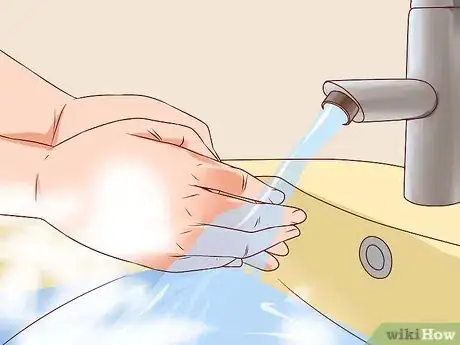
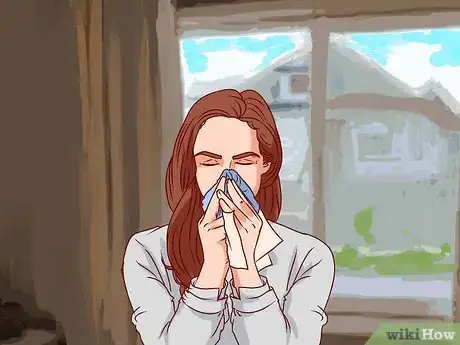








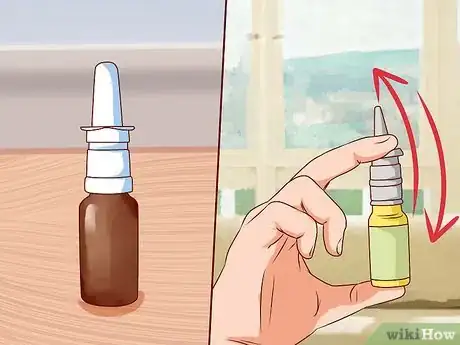



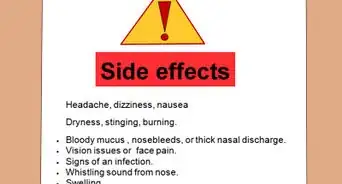
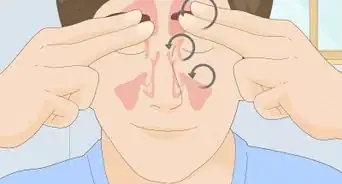
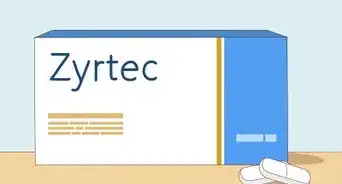
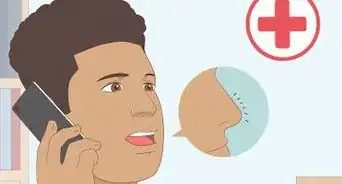

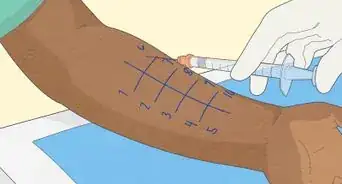
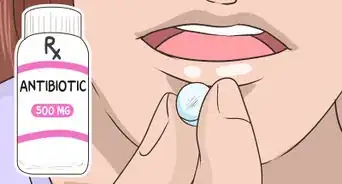

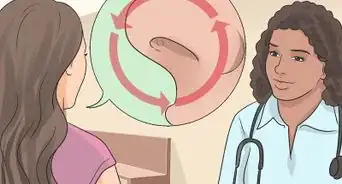

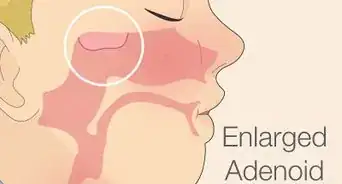
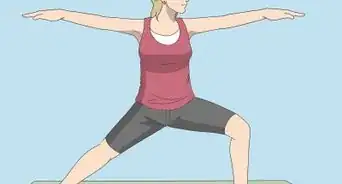










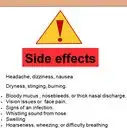
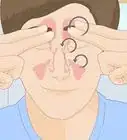
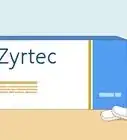



































Medical Disclaimer
The content of this article is not intended to be a substitute for professional medical advice, examination, diagnosis, or treatment. You should always contact your doctor or other qualified healthcare professional before starting, changing, or stopping any kind of health treatment.
Read More...